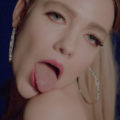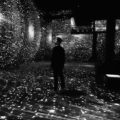The practice of doubt
Last October, I visited the Palais de Tokyo exhibition – “Future, Past, Fugitive”. I emerged an hour later, the visit not even over, tears in my eyes, a knot in the back of my throat, dumbfounded by what I had just seen and heard. I have long hesitated to write about this experience, and to be honest I hesitate still. The words that come to my mind are emphatic with anger, overwrought with incomprehension. But I appreciate the measure, or at least the hindsight, knowing them to be necessary if I am to speak. Time has passed, and I hope now to see more clearly.
Some background information is welcome here. At the beginning of last year, we began hearing about an exciting project at the Palais de Tokyo. Its ambition was to devote a major exhibition to the French art scene. We didn’t know much more about it. But at a time when many deplore the lack of support for contemporary French creation (and its related lack of recognition), this announcement by the Parisian art centre seemed salutary. More importantly, the excitement of being able to question the very relevance of such an undertaking, to question the possibility of the existence of a national scene in the digital age and its corresponding reduction of distances and borders, to study its mechanisms of construction, its networks and codes, its margins, too — its variations, its forms and colours. And then the processes of recognition: the construction of careers, the logic of “success”, the development of a “state art,” the role of power and of money in these gatekeeping institutions, the links between artistic value and financial speculation, etc. There is also the relationship to the public, the links between artists and territory, “popular culture” and “elite culture”, the search for a logic behind the growing disenchantment of a nostalgic population, a questioning of this disenchantment, a putting-into-context, a confrontation with history, in short: an opportunity to take a step back and adopt a critical view of our artistic and social environments.
Expectations were high ; the disappointment was sensational.
The reasons for this disappointment are essentially linked to the exhibition itself, to the curatorial approach. This is what I would like to focus on for a moment.
I think that the Palais de Tokyo, with this proposal, sank languidly into all the possible pitfalls of the practice of curating, and that this is essentially due to a clumsy lack of critical distance with the formal choices made — which are never entirely assumed — and a total lack of clarity in communicating and explaining those choices to the public. In spite of this, things were off to a fairly good start. To consider contemporaneity as a space in constant mutation — as a “fleeting” temporality in balance between inheritance and becoming — opens certain doors, while still avoiding the stupidity of a fixed thought. Immediately informing the public that the exhibition is not about the French contemporary scene, but about a French contemporary scene — seeking to explore intergenerational relations, places of creation sometimes flourishing on the margins of the market and major art events, trying to observe forms of creation in their varied challenges, trying to feel currents, shared research, patterns — all this is commendable and it is a good starting point. But it is unthinkable to stop here! We must then put in place clear selection processes, tools for gathering information, and then analytical methods to try to create links, to make connections, to contextualize, to draw conclusions, and finally to construct a discourse and to insert a thought into a space. All this requires time, rigour and questioning… all three seem to have been lacking here.
The exhibition is built as a juxtaposition of works. One after the other, the artists are placed one after another, one by one, through the course of the space, without any discernible path. We do not understand how they were chosen, how they were brought together, or what thought is intended to unfurl as we move through the exhibition. This impression is so marked that one comes to wonder whether the only reason for the spatial organization of the works was not predicated upon purely material constraints.
But even more problematic than the absence of an itinerary— a method by which a visitor would be intended to move through the exhibition — is the deafening silence: at no point are we told how the 44 artists and collectives presented here were selected. To explain this, the curators take refuge in the concept of subjectivity and evoke a “sensitive and dynamic cartography of another French scene.” After appreciating the fine effort to produce first-rate verbiage we nevertheless attempt to make heads or tails of the description, before coming across another gem: the exhibition is an “image that is neither an exhaustive account, nor even a representation, but is simply sensitive to a French scene. Or rather of an “other” French scene.” It all seems rather vague…
Obviously to be faultlessly thorough is impossible, and it would be difficult to affirm that the samples presented could have any particular representative power, but this does negate the need to define this sample, to question it – to qualify it as “sensitive” is far from sufficient! Can you imagine? There would be the French scene, and then another one next to it? This “other” scene that would not suffer any definition? Its otherness enough to constitute its consistency? Would its marginality alone succeed in making it unique? Of course not, and without any information on the selection process of the artists, one begins to think that they perhaps arrived here via nepotism or simply ease… In any case, nothing sheds light on the reason for their presence, or even questions what their presence together, here at this moment, could really mean. The Palais de Tokyo seems to have focused so much on parity – fortunately to almost perfect effect, but need we raise this point? – that it has forgotten other important subjects. This “other” French scene, for example, does not include any artists from overseas – what does this mean? This “other” scene is made up, at almost 25%, of artists represented by only four galleries (Crèvecœur, Art Concept, Thomas Bernard and Marcelle Alix) – what does this mean? This “other” scene is overwhelmingly white – what does this mean? Hiding behind our sensitivity is no longer enough.
It is absolutely obvious that curating is a subjective practice, just like criticism, or even the simple fact of looking at a work: objectivity does not exist! Basing the selection of artists upon subjectivity is therefore a matter of absolute redundancy, whereas the essential thing is to constantly question our subjectivity, to try to understand its forms, to question its origins, to be mindful of the environment in which it matured, to be aware of its evolution, to question it always, and never to rely upon it entirely because a subjectivity that is not nourished by doubt is a spirit that drifts to sleep and ends up dying.
— — —
A month has elapsed since that last sentence. Writing about this show brings me no pleasure, and I have no wish to waste my time howling into the void. And then the doubt I mentioned returns. The text is not finished, the arguments against this exhibition were gathered further down on the page, in fact I’ve just deleted them, I don’t feel like getting so heated anymore. And yet here I am again in front of my computer, a glass of wine on the table, turning my cigarette between my fingertips. Mechanically I reopen the file, with the desire to write.
About what? I’m not sure…
Another cigarette, some music. The melody soothes me, the smoke rises, my thoughts fog up, little by little.
Contemporary art comprises absolutely magnificent works, treasures of artistic research and formal poetry which, if we look at them closely, can open our minds to the sublime, cure our demons or reveal them, heal our wounds sometimes, push our limits, question our lives or simply colour them. And yet, for the vast majority of the population, contemporary art has become a joke, one told with a sour laugh over a family meal, a drink with friends – a tart mixture of contempt and mockery. Let’s face it, art professionals, some of whom have found no better response to these issues than the condescension of their own snobbery, are partly responsible for this disenchantment. Even though art is supposedly this openness to oneself, to others, and to the world… cruel irony.
Perhaps that’s what affected me so much at the Palais de Tokyo exhibition: hermeticism was there to be consumed; the visitor, despised. Cultural institutions have a responsibility to address the public, to engage in a positive dialogue with them, and the Palais de Tokyo – Europe’s largest centre for contemporary art – should be a figurehead. In the exhibition moving from work to work, in front of the texts, passing from one line to another, deep down I felt betrayed. Not only because nothing was really offered to me, because no dialogue was allowed, but also – and above all – because all this could only widen the distance between contemporary art and the public. As if we needed more of that… I was exasperated.
The music has changed, getting quieter and quieter. The night is well advanced. How can I conclude?
Our natural, political and social environments are constantly changing. From awareness to popular awakenings, from fierce debates on major social issues. Like all of us, artists are nourished by these great upheavals and this is also reflected in their work. There are so many energies in the world that are coming together and fighting for a better future. This may sound naive, but it matters. I would like these movements – these flashes of life fed by doubt, these existential inquiries, these human desires, dreams of living, convictions (conscious still of their conditioning) – to converge, to break down dogmas and structural inertia, to break down the doors of the institutions, and multiply.
It will happen, we must be sure of that.
Front image : Pierre Joseph, Mur de mûres, série Photographie sans fin, 2019. Impressions sur papier. Courtesy de l’artiste & Galerie Air de Paris (Paris). Crédit photo : Aurélien Mole. © Adagp, Paris, 2019.






